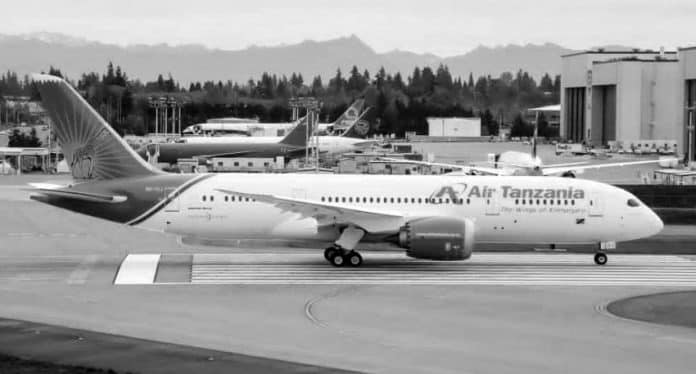Air Tanzania Company Limited (ATCL) – Critical Things You Need to Know
Air Tanzania Company Limited (ATCL) is the country’s official airline. In Swahili language, the name of the airline is translated as Kampuni ya Ndege ya Tanzania. The hub of the flagship carrier is located in Dar es Salaam, at Julius Nyerere International Airport. It is the domestic company that dominates Tanzania air, when it comes to air transportation.
Air Tanzania airline code is as follows:
- ICAO Code – ATC
- Airline Code – 197
- Air Tanzania IATA Code / Designator – TC
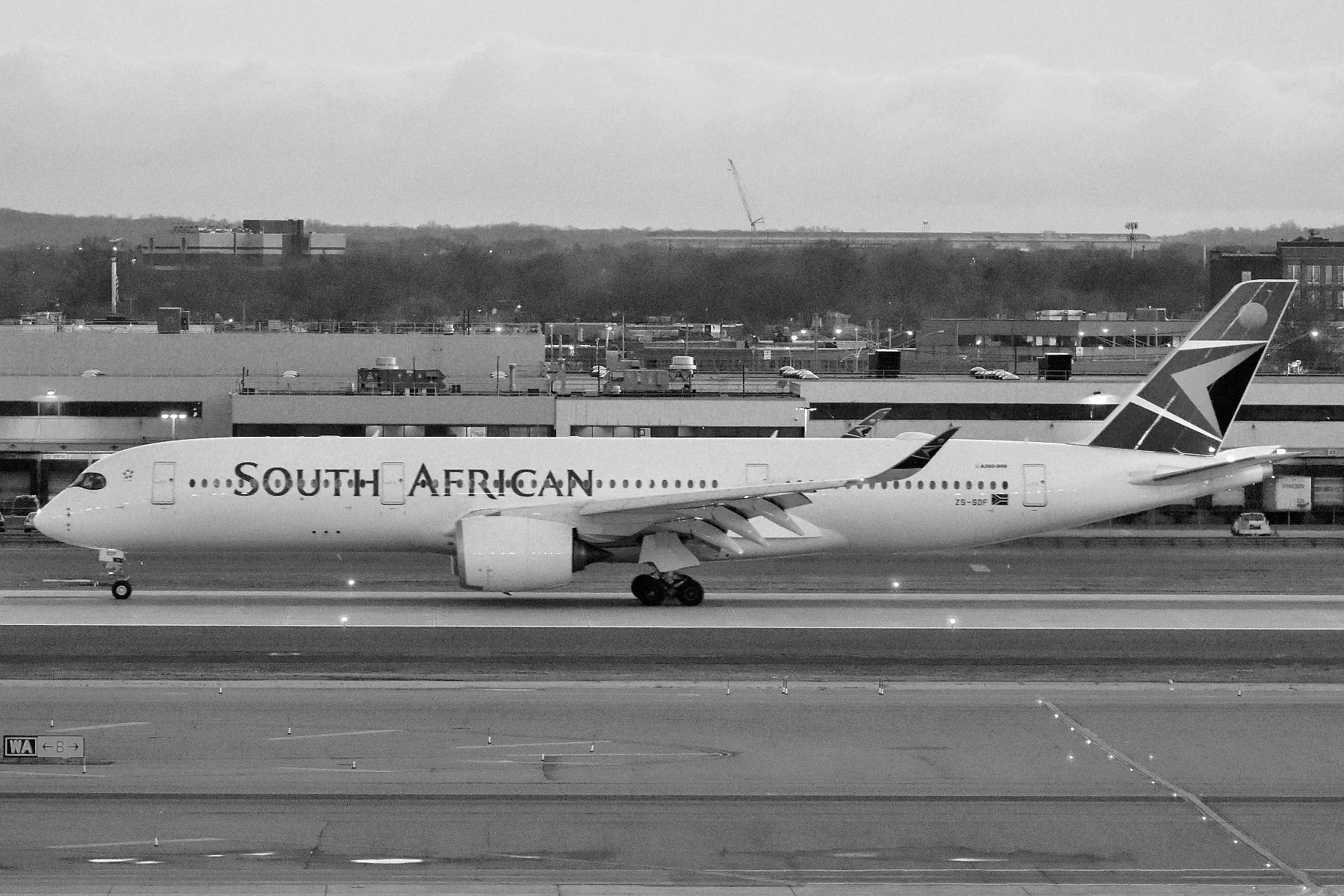
The Air Tanzania Corporation (ATC) established the airline in 1977 after East African Airways (EAA) was dissolved and it has belonged to the African Airlines Association since its formation. The Tanzanian Government was the sole owner of the airline to 2002 when South African Airways (SAA) became a partner after partial privatization, however in 2006; the government bought back the shares, to make it a fully-owned government entity again and completely broke down the Air Tanzania alliance with SAA that existed before.
In 2016, President Magufuli’s government started a new strategy to restore the country’s official carrier through purchasing more aircrafts from Boeing and Bombardier. The Air Tanzania airlines had plans to increase its fleet twice to 14 aircrafts by 2022 as well as get more regional and long-haul routes.
The Auditor General and Controller in April 2021, advised that Air Tanzania flights going abroad were at risk of impounding because of huge debts the company incurred. He revealed that the company’s losses were TSh150 billion amounting to USD 65 million from 2016. Nevertheless, the Tanzanian government announced a loan of USD 194 million for the carrier in May 2021.
Air Tanzania Reviews and History
Air Tanzania Corporation 1977–2002
The establishment of Air Tanzania Corporation (ATC) happened on 11 March 1977 to replace the defunct East African Airways (EAA) that used to serve East Africa including Tanzania. The dissolution of EAA resulted from its pile-up of debt amounting to $120 million.
Andy Chande who was the founding board chairman during its establishment revealed that Uganda and Tanzania didn’t get a reasonable share from the assets of the former carrier regardless of having been equal partners. ATC started operating after leasing a Douglas DC-9-32 from Kenya Airways with a purchase of 2 more Boeings 737, with financing from a U.S. bank. Air Madagascar also leased the airline an airplane.
In 1980, 4 DHC-6-300 Twin Otters and 4 Fokker F27s were added to the Air Tanzania fleet. Due to limited market, 2 Fokker 27s became absolute in 1981. These Air Tanzania planes returned to the airline in 1983 but were later removed again.
Air Tanzania started flying a leased Boeing 767-200ER from Ethiopian Airlines in May 1991; however, this airplane was very big and in February 1992 was given back to the lessor. In 1994, the airline revealed $650,000 in profits.
By the 1990s, “Any Time Cancellation” was being used to define ATC, the carrier’s acronym for having an unpredictable Air Tanzania flight schedule.
Alliance Air
The formation of Alliance Air in 1994 was a partnership between South African Airways (SAA), Air Tanzania, and Uganda Airlines. Air Tanzania owned 10 % of the partnership. Initial flights were to London–Heathrow from Dar es Salaam through Entebbe on Boeing 747SP, afterward a Boeing 767-200 which was smaller.
In October 2000 business stopped after accumulating losses amounting to around $50 million. Transnet, SAA’s parent company had funded the losses of Alliance Air until April 2000. After Transnet hesitated to fund the deficit anymore, SAA was accused by Air Tanzania of employing Alliance Air “like a decoy to overtake regional airlines in neighboring nations”.
The Tanzanian government embarked on finding a private investor for ATC using the Presidential Parastatal Sector Reform Commission in February 2002. Announcements were put in Tanzanian, regional, and abroad communication channels encouraging possible investors. International Finance Corporation (IFC) played an advisory role to the government regarding this transaction. The approved transaction structure for the government included:
- Formation of “Air Tanzania Holding Company” to take on all of ATC’s dormant assets and other liabilities.
- The formation of “Air Tanzania Company Limited”, a new entity that would become a limited liability company in adherence to the Companies Act, will take on the operating assets including ATC’s liabilities and specified rights.
Eight airlines expressed interest including:
- Kenya Airways
- Air Gulf Falcon from the UAE
- South African Airways
- Air Consult International from Ireland
- Precision Air Tanzania
- Comair from South Africa
- Aero Asia International from Pakistan
- Nationwide Airlines from South Africa
Among the 8 airlines, 4 airlines did due diligence – Comair, SAA, Nationwide Airlines, and Kenya Airways. On 19 September 2002, which was the deadline for bidding, just SAA had submitted. Nationwide Airlines and Kenya Airways had told the government about lacking interest in submitting bids.
Air Tanzania Company Limited (2002–2006)
The government of Tanzania chose SAA for having the winning bid. In December 2002 after signing a concession with the Tanzanian government, SAA bought 49 % shares worth $20 million in Air Tanzania Company Limited (ATCL). The government remained with $10 million worth of shares, and the Capital and Training Account remained with the balance of $10 million to finance Air Tanzania’s scheduled business plan.
For the strategic partnership, SAA intended to make Dar es Salaam an East African hub as part of the “Golden Triangle” including eastern, western, and southern Africa. Additionally, SAA planned to introduce Boeing 767-300s, 737-800s, and 737-200s a part of ATCL’s fleet. SAA further intended to begin regional routes, such as West Africa and the Middle East. The government had to dispose 10 % of the 51% shares to a local investor, thus leaving the government with a minority interest in ATCL.
The launching date for the rebranded Air Tanzania was 31 March 2003, with the carrier offering direct flights between Dar es Salaam and Johannesburg, and also to Kilimanjaro region and Zanzibar.
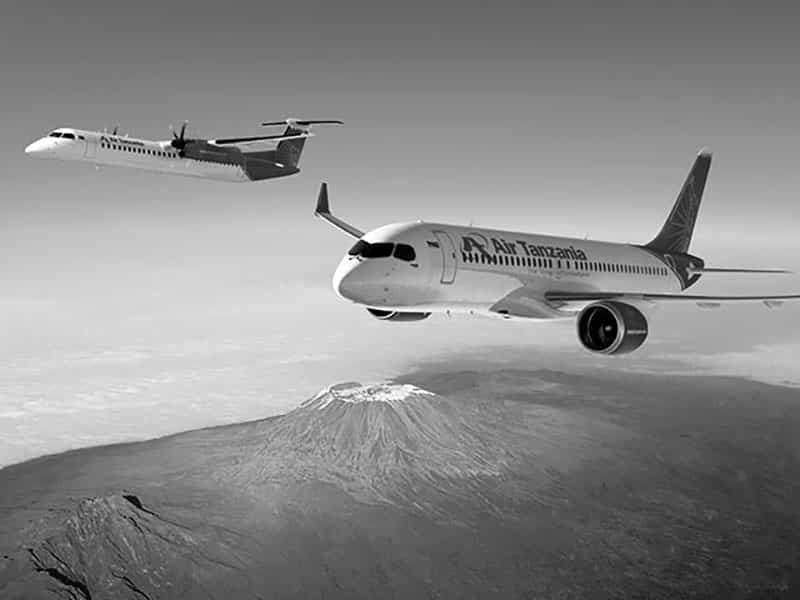
In the first year after privatization, Air Tanzania made a loss of around $7.3 million before tax. Failure to spread the network extensively and quickly as originally anticipated was the main reason for the loss. A plan was made to launch Air Tanzania routes to India, Europe, and Dubai, but there were delays because Air Tanzania’s fleet included just Boeing 737-200s. Developing Dar es Salaam to become the SAA Alliance’s EA hub had failed to happen at the planned pace.
By 31 January 2005, Air Tanzania suspended Dar es Salaam to Nairobi flight, one of the airline’s few services in the region, Kenya Airways was the market leader. However, the airline reaffirmed its plan to begin long-haul Air Tanzania flight from Mumbai to Dar es salaam, London, Muscat, and Dubai in year.
By 31 March 2006, the government of Tanzania announced the intention to give away ATCL after making losses that reached TZS 24.7 billion in 4 years. Margaret Munyagi, the director-general of Tanzania Civil Aviation Authority revealed that the airline had been in a miserable condition than before its takeover by SAA. However, SAA claimed the government of Tanzania miscalculated when it failed to release around $30 million required for the implementation of a business strategy to overturn Air Tanzania’s regular losses.
The government of Tanzania purchased SAA’s 49 % shares in ATCL worth $1 million on 7 September 2006, thus officially ending the business cooperation with the South African firm. The investment failed because the partners had varying business interests.
ATCL’s Relaunch (2007–2015)
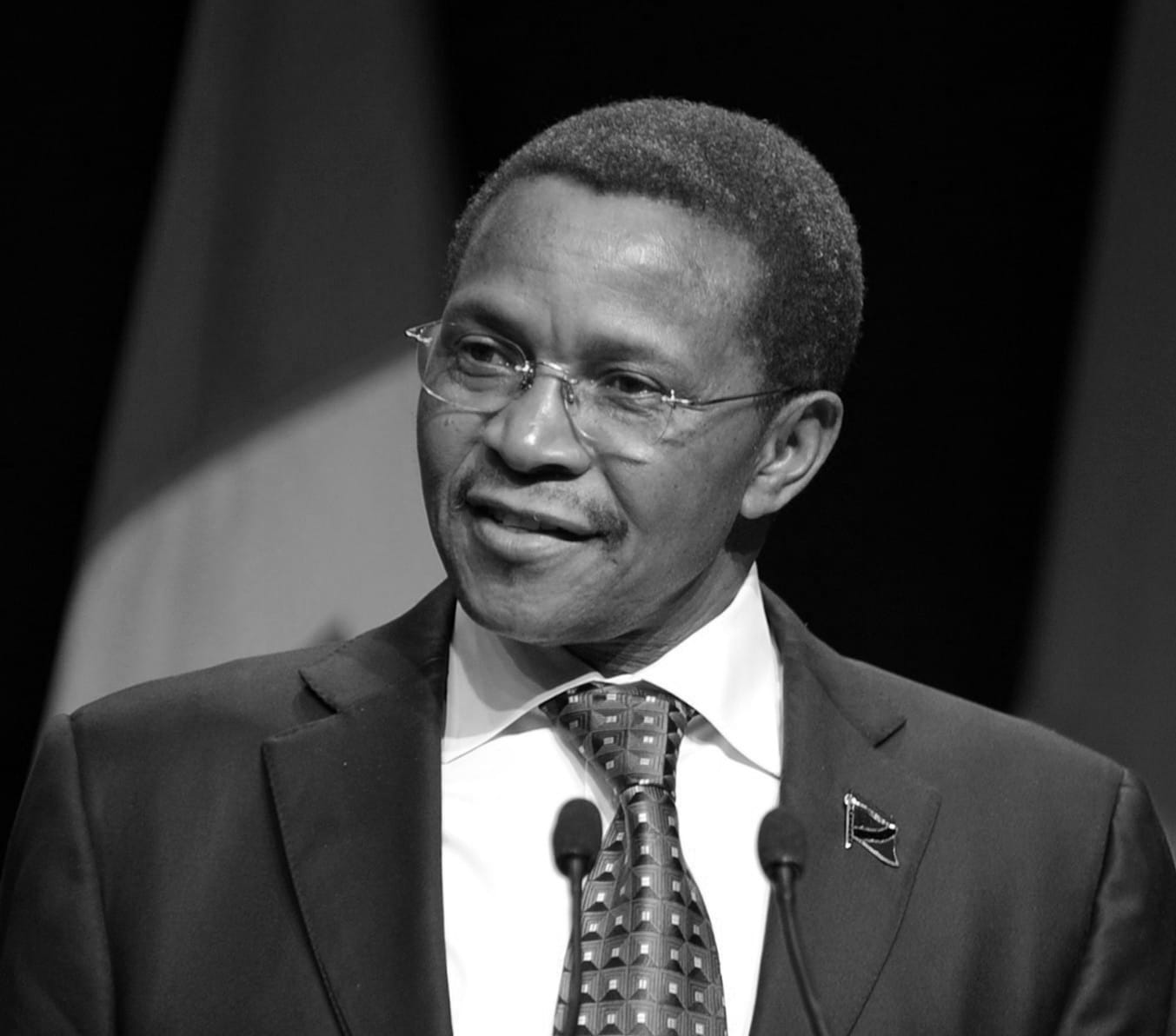
Following the official termination of SAA and Air Tanzania’s partnership, the government set aside TZS 13 billion to allow the carrier to begin using its Air Tanzania booking ticket stock number 197 rather than SAA’s stock number 083, using a new trademark, changing fuel services and revenue systems, preparing accounts and Air Tanzania online booking plus ticketing systems, and clearing overdue debts. President Jakaya Kikwete chose Mustafa Nyang’anyi, a veteran diplomat ambassador and politician, to be the board chairman, including David Mattaka, a former director-general of Parastatal Pensions Fund to be the CEO and managing director.
Jointly, the government went on to begin searching for a new private partner to manage the carrier. The first meetings started in 2007 with China Sonangol International Limited, nonetheless, the meetings were ultimately futile until the end of 2010. ATCL began using its Air Tanzania ticket stock and operating as a government-owned airline on 1 July 2007.
There was concern regarding the lack of funds set aside for ATCL from the Parliamentary Committee on Economic Infrastructure. The opposition expressed that SAA is responsible for the airline’s $4 million debt. A National Assembly of Tanzania member advised the government to seek compensation from SAA for going away with spare parts to South Africa from the airline’s Kilimanjaro International Airport hangar.
Rebranding
In September 2007, the relaunch of Air Tanzania took place after leasing 2 Boeing 737-200s to add to its fleet following the dissolution of the business connection with SAA. The new branding portrayed the name of the company, the airline’s foreign destinations, and Mount Kilimanjaro. The carrier’s new logo was launched on an Airbus A320 that had been leased having an image of an imposing giraffe – the country’s national icon, replacing SAA’s flag symbol. The rebranded airline made its maiden flight to Mwanza from Dar es Salaam through the Kilimanjaro route on 1 October 2007.
The carrier had purchased 2 de Havilland Canada Dash DHC 8-Q311s by February 2008. Tanzania Civil Aviation Authority (TCAA) revoked the Air Operator Certificate for Air Tanzania in December 2008 since the carrier had been unsuccessful in matching the standards of the International Civil Aviation Organization. After 2 weeks, the International Air Transport Association (IATA) prohibited the airline from any aviation dealings and advised any travel agency and related aviation company not to do business with the airline indefinitely.
In January 2009, Air Tanzania got the certificate back, and together with TCAA, they refuted claims of doubt regarding the airline’s airworthiness. Between 2009, Air Tanzania had 60,018 passengers, Precision Air 583,000 passengers, and Coastal Aviation 141,995.
In July 2010 after the failed talks with China Sonangol International Limited, press reports suggested that Air Tanzania was having serious meetings with Air Zimbabwe aimed at setting up substantive and extensive management partnership arrangements. The two airlines were rumored to be searching for strategic collaborations to reinforce their operations that had been declining over the last decade.
Decline
The airline was regularly declining between 2011 and 2015, characterized by fluctuating Air Tanzania schedule of planes that led to the closing down operations multiple times because of lacking aircraft. By March 2011, Air Tanzania became officially grounded, after a Bombardier Q300, its only remaining working aircraft was required to be sent to South Africa for heavy maintenance, the carrier was left stranded since it failed to predict appropriate aircraft leases that would provide backup during such period.
During that time, another Air Tanzania Bombardier Q300 was at ATCL’s Dar es Salam hangar getting a heavy C-check, stranded there because of lacking funds to import spare parts. In November 2011, Air Tanzania started flying again after the airplane’s return. The cost of maintenance was $1 million, while additional expenses accumulated to $3 million that was paid by the government of Tanzania in September 2011.
Jet Link Express leased Air Tanzania a Fokker F28 airplane in November 2011 to be on standby in case its only operating aircraft became immobilized. The airline gave the public assurance never to stop operating again with a promise to procure additional aircraft that was expected in the next months or years, this was from the airline business plan disclosed to the media.
Air Tanzania started talking to Export Development Canada (EDC) on 21 November 2011, to explore ways EDC could help the airline acquire additional airplanes from Canadian manufacturer, Bombardier. However, the airline’s huge debt made those negotiations fail.
Air Tanzania leased a Boeing 737-500 from Aerovista by 29 March 2012 to improve its service delivery for the time being. At the beginning of August 2012, the airline revoked Aerovista’s contract and had to return the aircraft. A Bombardier Q300 remaining alone in the fleet needed maintenance, which made the airline stop operations and have potential passengers of Air Tanzania booking other carriers.
On 12 October 2012, the airline entered the skies again using an Air Tanzania Boeing 737-200 that was 32 years old. This airplane was acquired on lease for 3 months from South Africa’s Star Air Cargo. On 11 October 2012, the 737 landed in Dar es Salaam draped in the airline’s livery thereafter to begin operations the next day.
Towards the end of 2012, Ludovick Utouh, the Auditor General and Controller of Tanzania, suggested criminal charges against 3 former ATCL staff in managerial positions for involvement with Wallis Trading Company from Lebanon to lease the Airbus A320 in 2007. The Auditor General revealed that there was too much mismanagement and misappropriation in the leasing contract, leading to the accumulation of debt worth $41.4 million as of October 2012, guaranteed by the Tanzanian government. The airplane was with ATCL for 4 years, however, of these 41 months were spent in France to undergo major maintenance.
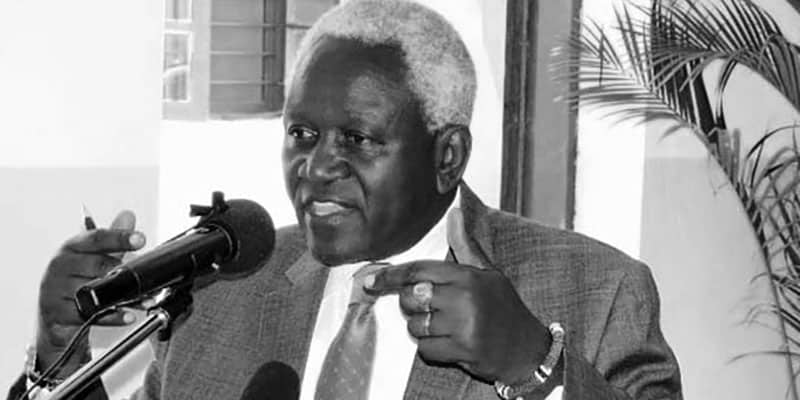
On 10 January 2013, the airline started operating its route to Kigoma again using a Bombardier Q300. Air Tanzania quickly expanded its domestic routes including even starting flights to Bujumbura in Burundi with new management.
In January 2013, while the carrier was searching for a new partner, Sheikh Salim Al-Harthyan, the Al Hayat Development and Investment Company (AHDIC) chairman revealed intentions for an investment firm from Oman to finance Air Tanzania with $100 million. The figure would be for building a training center and airline offices, buy airplanes, and do other development ventures which would start before 2013 ends.
By August 2013, the AHDIC pledged to Air Tanzania 4 Bombardiers and 4 Embraer 175. The Sheikh revealed further that the first investment of $100 million would keep on increasing over time. However, by May 2014, communication channels reported that there was zero progress made and doubted the authenticity of AHDIC as a genuine company. After 16 days, nevertheless, AHDIC emphasized interest in the initial deal.
Revival (2016 – to date)
The new government of John Magufuli pledged to rebuild the airline. By May 2016, this government revealed intentions to buy 2 aircraft that year and 2 extra aircraft in 2017. By 15 September 2016, the president chose Ladislaus Matindi as ATCL’s director general.
The government of Tanzania on September 2016, through the Tanzania Government Flight Agency (TGFA), received 2 Bombardier Q400 turboprops at Julius Nyerere International Airport, Dar es Salaam for use by the national carrier.
Bombardier Commercial Aircraft on 2 December 2016 revealed that the government of Tanzania, working through TGFA, had validated firm sale agreements for a Q400 turboprop and 2 CS300 jetliners for leasing to Air Tanzania. The CS300 is the current Airbus A220-300.
2 Boeing Air Tanzania 787 Dreamliners worth $224.6 million at market prices were received by after the TGFA ordered more.
The third and last Air Tanzania Q400 with tail number 5H-TCE was acquired on 2 April 2018. Planned delivery of this aircraft was supposed to be in August 2017; however, Sterling, the Canadian contractor, had seized the aircraft since the Tanzanian government wasn’t willing to pay a debt of $38.7 million that the International Court of Arbitration had awarded the contractor in 2010. The legal standoff got under control in March 2018, leading to the release of the plane.
In possession of the new aircraft, Air Tanzania renewed service to different domestic destinations.
Air Tanzania received a Boeing 787 Dreamliner, for deployment on international flights on 8 July 2018. The Government Flight Agency owned every new airplane that the airline leased.
In December 2018, Air Tanzania got its first Airbus A220-300 with registration number 5H-TCH. The airline was now the first carrier in Africa and the fifth across the world to own an airplane from the A220 family.
By 11 January 2019, Air Tanzania acquired a second Airbus A220-300 that landed at Julius Nyerere International Airport, Dar es Salaam and was named Ngorongoro with registration 5H-TCI.
Between June and July 2019, Air Tanzania began new flights to Mumbai in India and Johannesburg in South Africa. The Airbus Air Tanzania A220-300 and the Boeing 787-8 serviced these routes.
One of the Airbus 220 aircraft was captured at O R Tambo International Airport, Johannesburg in August 2019, for unpaid debt from the government of Tanzania. The carrier retaliated by suspending all South African flights, claiming safety concerns resulting from xenophobic attacks.
Air Tanzania’s Corporate Affairs
Proprietorship
The Tanzanian Government solely owns Air Tanzania. By 30 June 2011, the airline’s equity was around TZS 13.4 billion. Government appointees form the carrier’s board of directors; moreover, it has been condemned for having “all members without aviation experience “.
Business Trends
Air Tanzania’s financial and related figures are not officially published regularly, and by February 2012, auditors were said to be discussing the accounts from 2008 to 2010. According to different statements from officials, government documents, including press reports, the latest trends are:
The Auditor General and Controller in April 2021, cautioned that the airline’s aircrafts flying abroad are at risk of impounding because of huge debts owed by the carrier. He revealed that the airline had realized losses amounting to TZS 150 billion ($ 65 million) from 2016. Nevertheless, the Tanzanian government declared a bailout worth $ 194 million for the carrier in the coming month.
Air Tanzania Destinations
Air Tanzania route map consisted of 6 international destinations by December 2019 that included dedicated routes in the region and India. The airline further served 10 domestic destinations from the Dar es Salaam hub at Julius Nyerere International Airport.
Historical Air Tanzania Fleet Size
Some of the aircraft operated by Air Tanzania over the year include:
- Airbus A320
- DHC-6 Twin Otter
- Dornier 228
- Boeing 707
- Fokker F27 Friendship
- Boeing 737-200
- Fokker 50
- Bombardier CRJ200
- Boeing 737 Classic
- McDonnell Douglas DC-9
- Boeing 767
Accidents and Air Tanzania Safety Record in General
Air Tanzania’s Boeing 737-200 registration number 5H-MVZ slipped off a wet runway on 1 March 2010 while landing at Mwanza Airport. The aircraft’s nose wheel fell off, while the right-hand engine and hull were damaged. However, there were no reports of injuries. Repairing the plane was very expensive so it was permanently stored in Mwanza awaiting a decision to seek compensation from the insurance company. This was the first dent in the clean record pertaining to Air Tanzania safety rating.
One of the memorable Air Tanzania crash was the one involving its plane de Havilland Canada DHC-8-311Q registration number 5H-MWG that crashed on 8 April 2012 while taking off at Kigoma Airport. There were no injuries, although the airplane was damaged beyond repair.
A Dar es Salaam-bound Airbus A220 on 27 September 2019, experienced engine failure shortly after taking off from Mwanza Airport and promptly made a U-turn. No injuries were recorded, but the plane got grounded pending an engine change.
Air Tanzania Contact:
Air Tanzania phone number – (air tanzania customer care number)
Other Important Information and Air Tanzania Latest News
Air Tanzania website – https://www.airtanzania.co.tz
Air Tanzania twitter – https://twitter.com/AirTanzania
Air Tanzania jobs – https://www.airtanzania.co.tz/careers
Air Tanzania flight booking – https://www.airtanzania.co.tz/index.php
Air Tanzania cancellation policy – https://www.airtanzania.co.tz/faqs
Air Tanzania cargo tracking – https://www.flightscheckin.net/air-tanzania-cargo-tracking/
Air Tanzania baggage allowance international – https://www.airtanzania.co.tz/faqs
Air Tanzania baggage policy – https://www.airtanzania.co.tz/faqs
Air Tanzania Logo

For more articles on airlines in Tanzania click here!

























